Cannery Row
The Last Cannery in BC
Originally Published: Tuesday, May 9, 2023
Specs
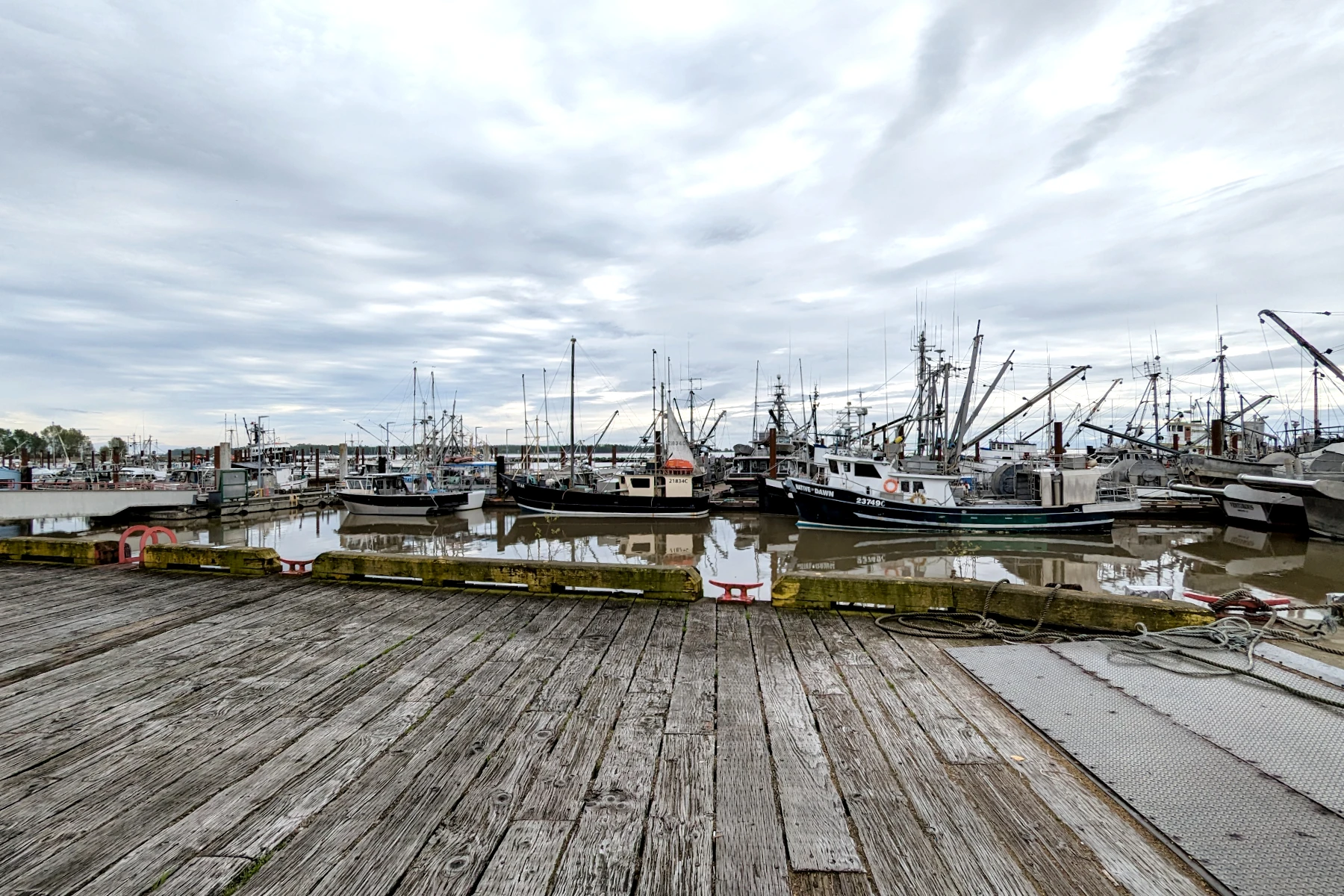 Steveston, BC is still an active fishing port.
Steveston, BC is still an active fishing port.I Went to See the Sights
Today’s review is more akin to a travel blog entry. If you’d like to skip directly to the fish review, please click here.
Disclaimer: The history of canning in BC is fraught with perils of exploitation, racism, and sexism that are reflective of era-appropriate values. This museum has multiple exhibits dedicated to reconciliation and education of these events. For those interested please visit the museum to learn more. I won’t touch those subjects in this article. Links at the bottom of the article.
In the historic fishing village of Steveston, British Columbia sit the sloped-roof warehouses of the Gulf of Georgia Cannery. This museum and historic site is focused on preserving the history of BC canneries and fishing industries. The museum houses a host of historic artifacts and interactive exhibits related to the history and process of the canning trade. As a can-enthusiast I cannot pass up this museum. The main event in the museum is a recreation of an old-school canning line with period machinery.
The canning line exhibit starts with a large board that shows the individual steps in the canning process and a brief summary of each step as they would’ve occurred on the vintage machinery. This historic process is not much different from contemporary canning processes. Each important stop along the canning line is adorned with signage that explains the process in detail and occasionally feature interactive elements as well.
The Canning Process
Mechanization of the canning process sped up production of cans massively, and since the days of the first mechanized production lines and retorts, the process remained largely unchanged.
The first step is unloading, where stock is brought into the plant, weighed, and sorted. Large modern plants are able to sort their fish automatically but smaller plants will still do this manually.
Butchering comes next, where the heads, tails, fins, and innards are removed. Some fish will have their bones removed as well but salmon is often canned bone-in. After butchering, the fish have to be cleaned and washed before being cut into can-sized pieces. The cleaning and cutting phase are automated in modern processes.
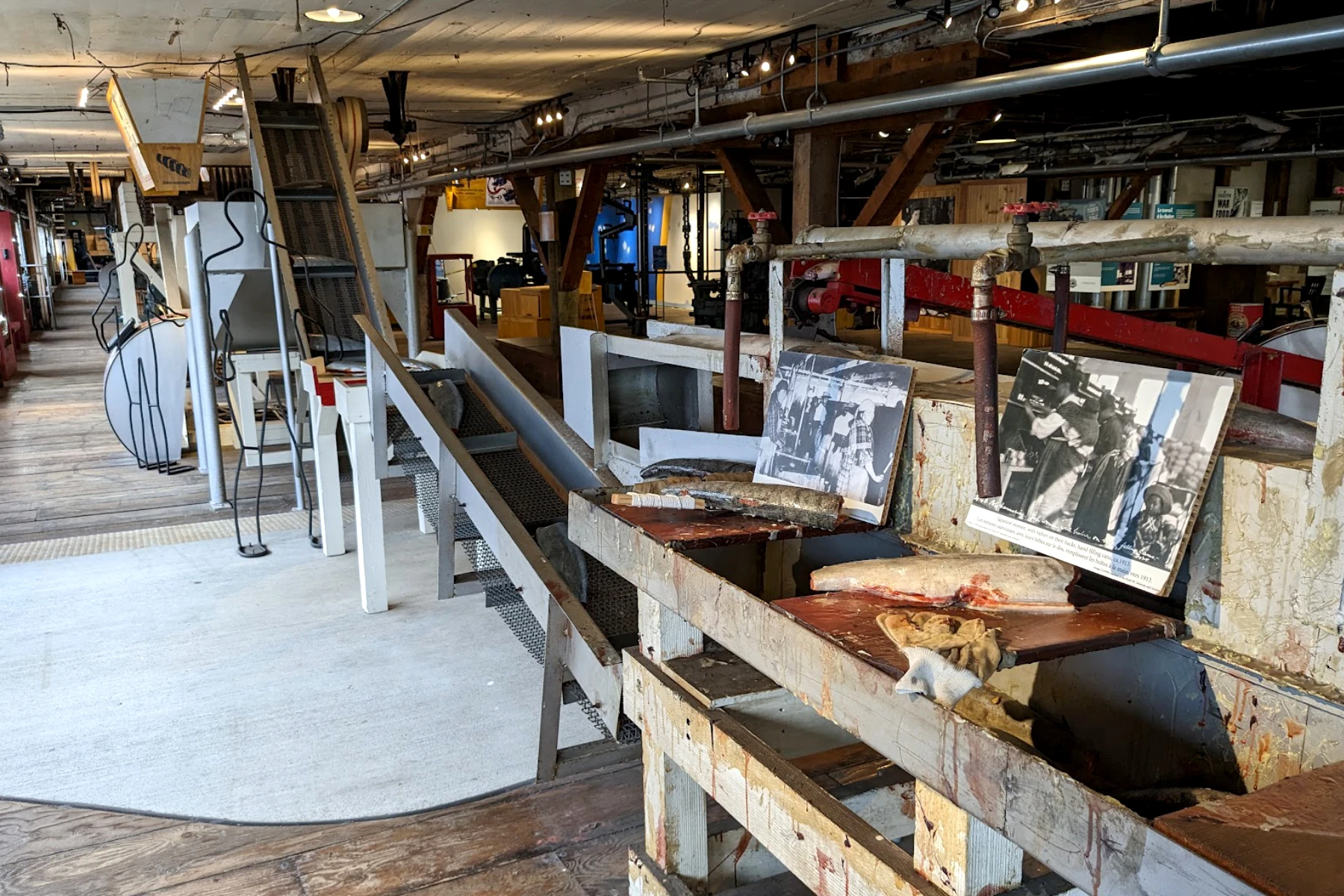 Where the butchering happens.
Where the butchering happens.Cans are formed and filled with the cut fish before an initial weighing. Any cans not within the accepted weight go through patching, where the portions are adjusted by hand by a line-worker. Canneries today still employ line-workers to do patching by hand.
After patching, the cans are vacuumed to extract all the air and sealed with a lid. Properly sealed cans are brought to the retort, a large pressure cooker that cook the cans. Retorts are still in use today during the canning process, although the technology has improved somewhat. After cooking, cans are checked for leaks and damage, then packaged and shipped.
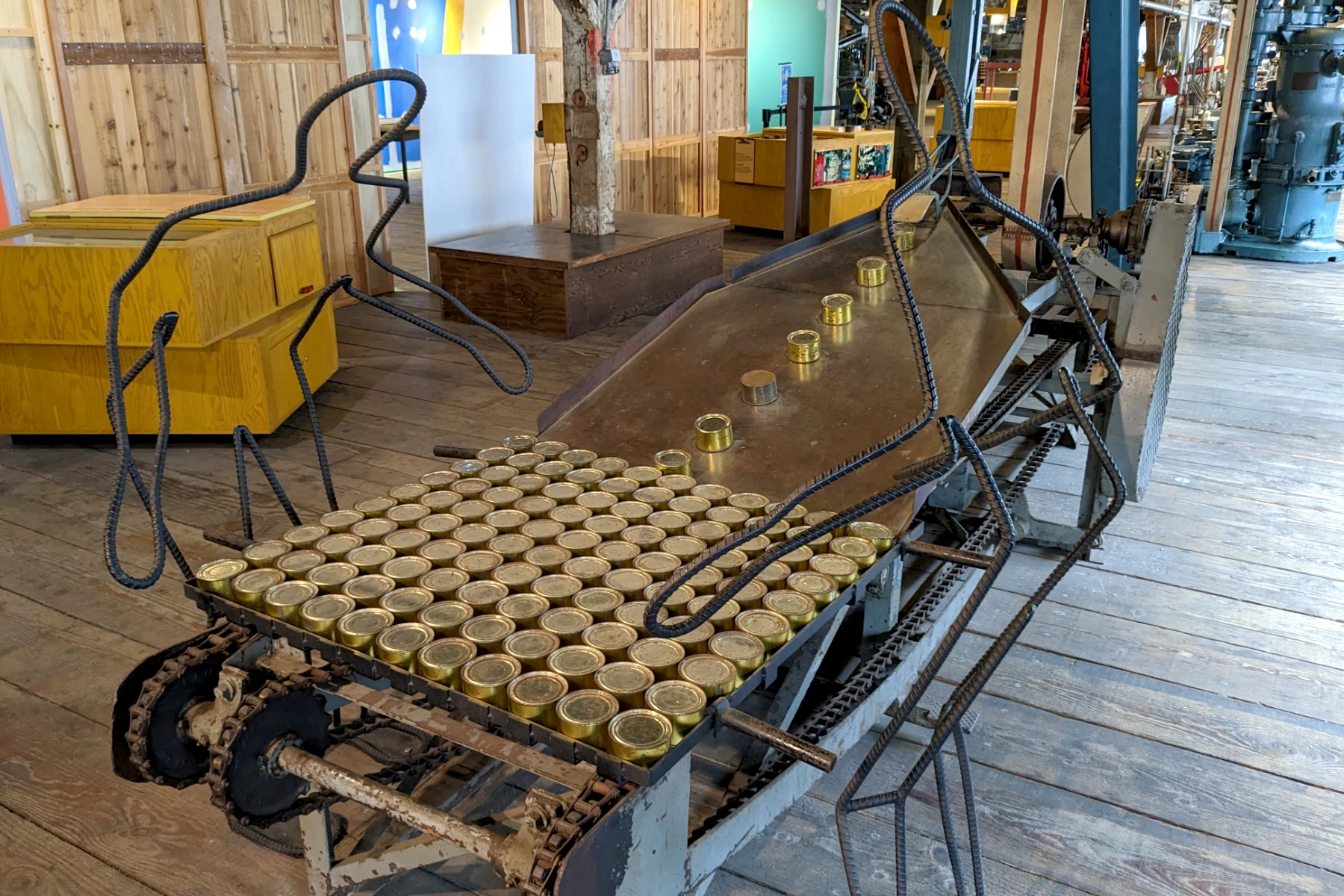 Ready for cooking.
Ready for cooking.After getting my fill of the museum’s various exhibits it was time to exit through the gift shop. I could never resist the allure of a gift shop and I was hoping that a cannery museum might sell canned seafood. My prayers were answered as they featured an entire wall of different canned fish, with some unique offerings that I had not seen before.
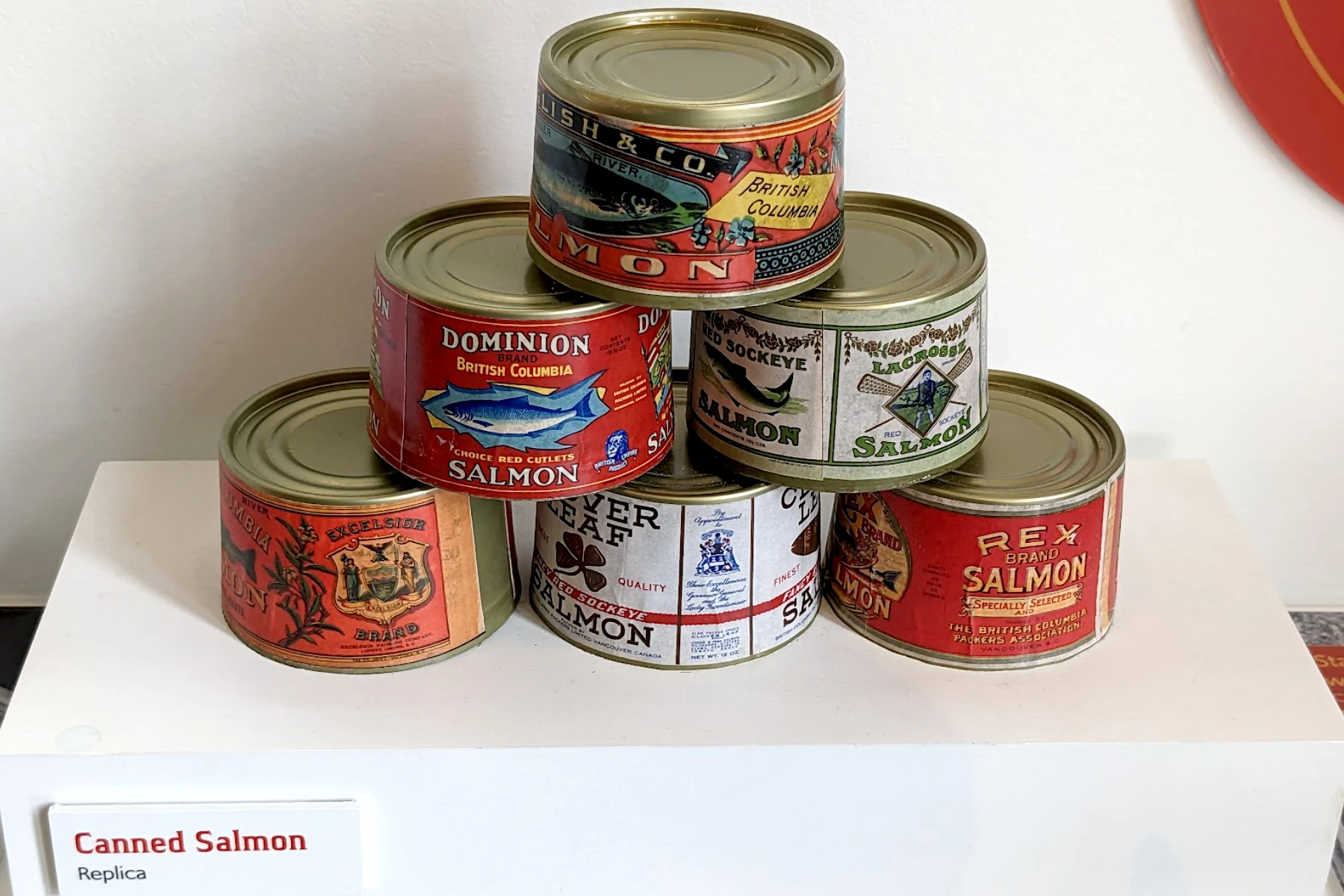 Replicas of vintage cans on dsiplay at the Steveston Tram historic site.
Replicas of vintage cans on dsiplay at the Steveston Tram historic site.The museum attendant informed me that the cans are from the last surviving commercial cannery in BC. Besides making and selling their own products, they also package and distribute products for other brands.
In honour of St. Jean’s Cannery, the last of its kind, I will be reviewing three different products processed in their plant today.
The Lone Survivor
St. Jean’s Cannery based on Vancouver Island is the last surviving commercial salmon cannery in British Columbia. They have been in operation since 1961. With the decline in demands for canned fish over the last 100 or so years, the demand for canneries have also declined. I will definitely review one of their products in the future, but today’s contender is The Fishery Seafoods.
The Fishery Seafoods Ltd. is a family owned and operated seafood company based in Duncan and Salt Spring Island. Duncan is a city about an hour north of the provincial capital of Victoria, located on Vancouver Island, and Salt Spring Island is due east off the coast of Duncan, part of an island cluster called the Gulf Islands. They package their wild caught salmon through the canning facilities at St. Jean’s Cannery.
I tried to pick three contrasting products from their sizeable selection and ended up with their Wild Sockeye Salmon, Wild Coho Salmon and Smoked Wild Chum Salmon.
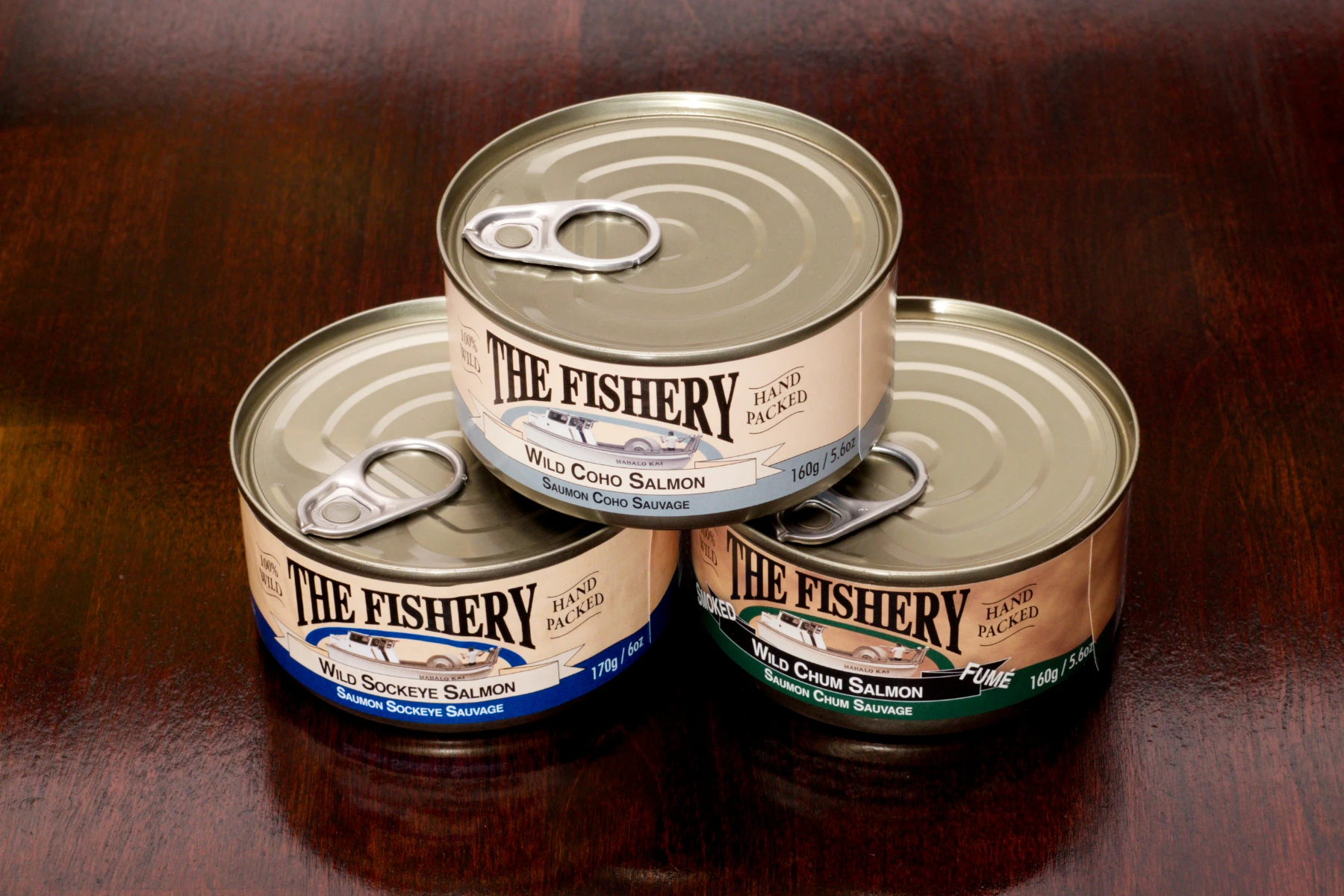 Good things come in threes.
Good things come in threes.Each product was sampled on their own with no accoutrements. I took some generous sips of water in between each product to reset the palate. After a few initial bites from each I took alternating tastes of the three different products to see if there was a notable change in perception.
The Sockeye
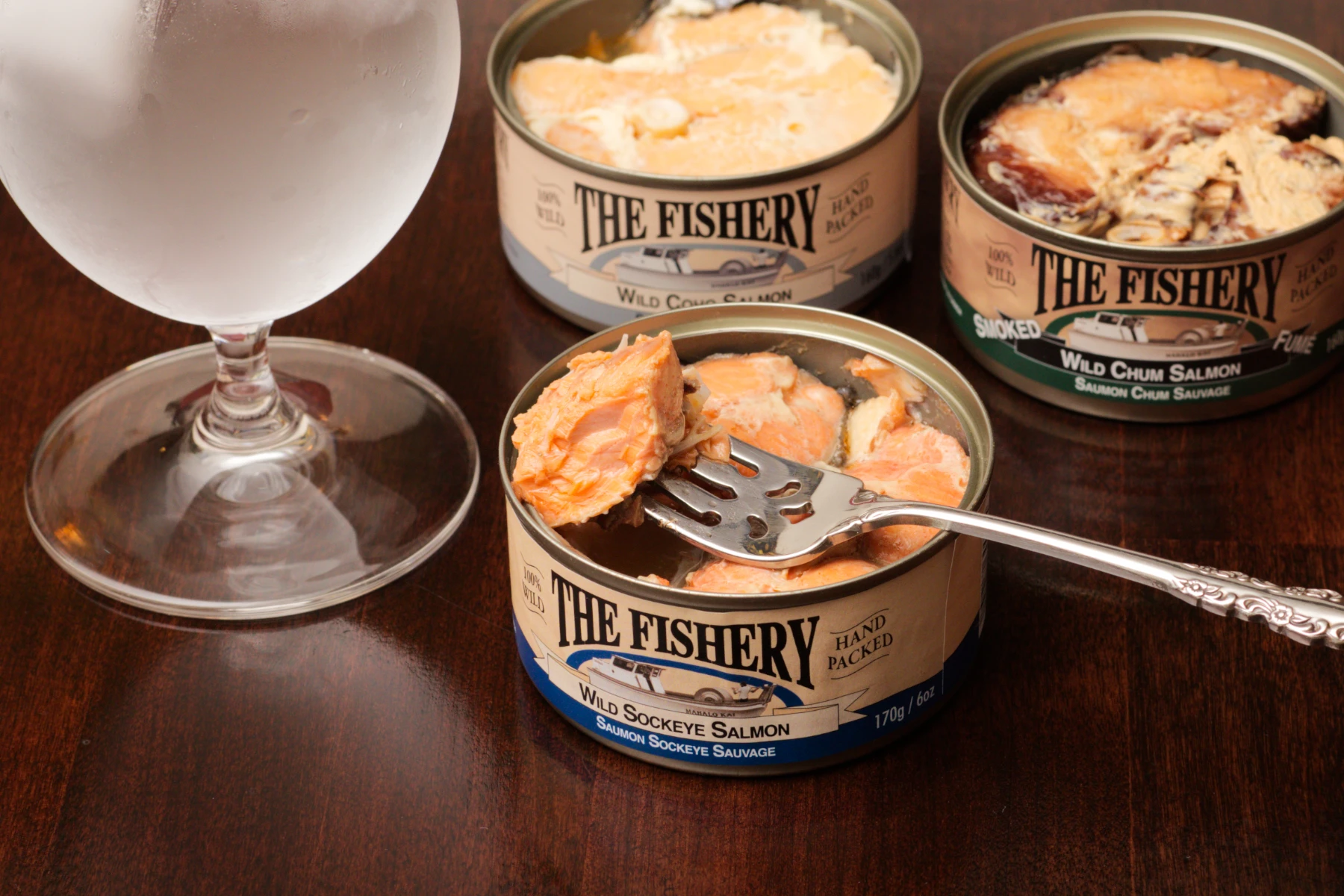 Sock it to me.
Sock it to me.Sockeye salmon is probably the most famous species of salmon in the Pacific Northwest. Their characteristic red body and green head during spawning season make them an iconic mascot for Pacific salmon.
Opening the can greeted me with a light wisp of the ocean, slightly briny and fishy, but not pungent. The fillets of orange-pink flesh were wrapped with the skin intact. A film of the salmon’s natural fats floated on the surface of the flesh, giving it a milky appearance. The bones are left in for extra texture and crunch, which I love to see in salmon cans.
The first taste was surprisingly subtle. The salt content was low, so the flavours of the fish were the main star of the show. The flesh was tender and moist, and the structure of the fillets held up very well to my manipulation with the fork.
The subtle flavours eventually coalesce as the tongue adjusted. There was almost a creaminess to the flesh, no doubt imparted by the fatty oils still trapped in the structure of the fish. The distribution of the natural fats throughout the fillet was very even and every bit afforded the same experience.
The salmon flavours are well preserved without overcooking the meat. This allowed the salmon to taste rather fresh. There was a miniscule amount of fishy funk, but barely noticeable and definitely not unenjoyable. A hint of metal rounded out the tasting and tapered off quickly.
The bones in the fillets added some fun, crunchy textures. The skin was tender, silky, and not gummy. The natural gelatin in the fish skin was beautifully preserved and provided a satisfying, almost buttery experience.
The Coho
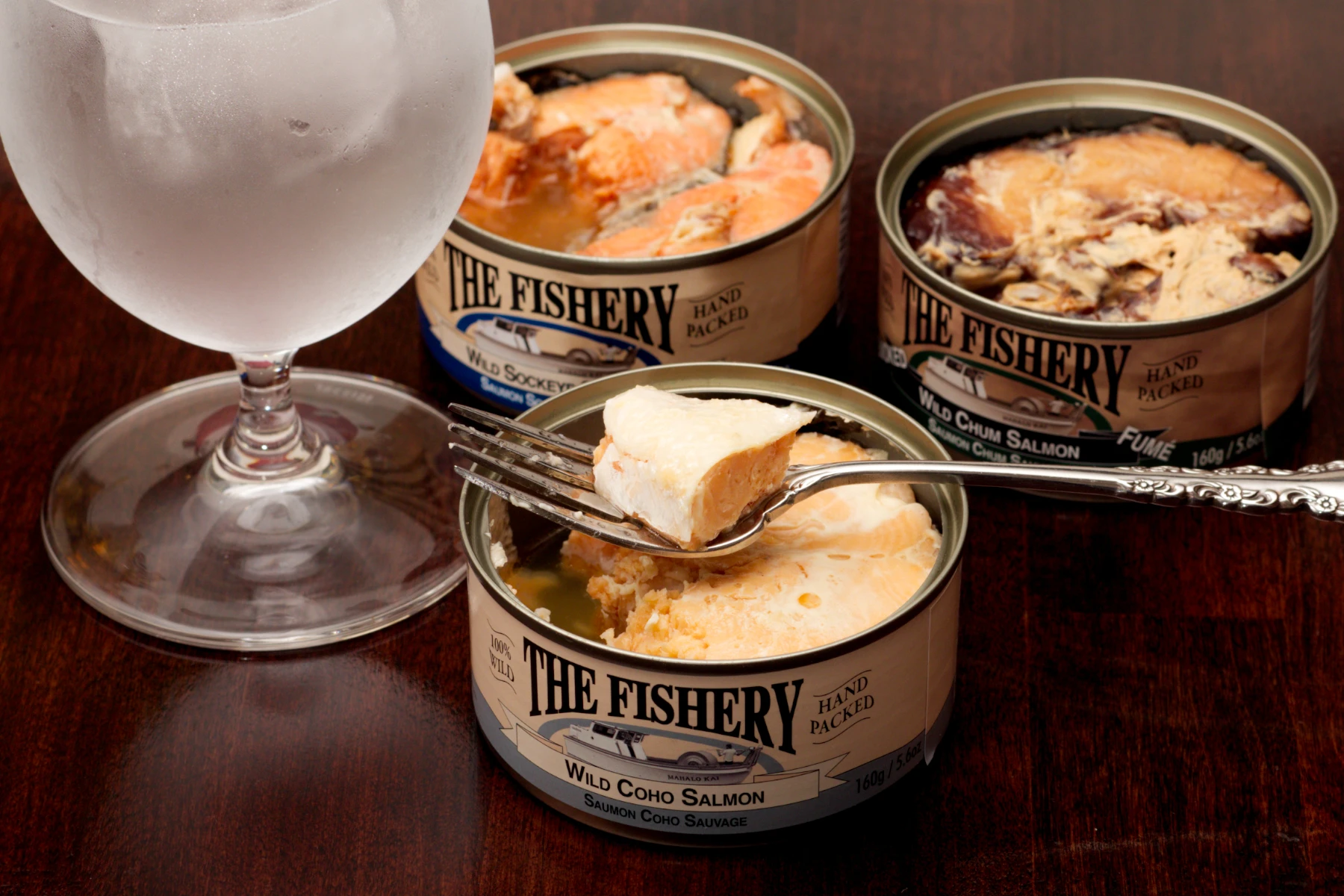 Too Cohool for School.
Too Cohool for School.Coho salmon is one of the five Pacific salmon species and is a hugely important fish crop to people living on the pacific coast. They generally have a lighter shade of pink compared to their brethren.
Opening the can presented me with a bit of déjà vu as I was transported back to the seaside once more. Compared to the sockeye, the coho had an even brinier, fishier scent. The scent of salmon was definitely more pronounced and riled up the appetite.
The flesh is a much lighter shade of pink compared to the sockeye and was covered in a web-like matrix of fat and proteins. While not necessarily the most visually appetizing, this matrix provided a very enjoyable tasting experience as it melted on the tongue, a bit like marbled beef.
The fillets were a bit flakier than the sockeye, but still retained most of the moisture and textures you’d expect from fresh fish. There was slightly more salinity in this can to match the bolder salmon flavours, but it never overpowered the natural flavours of the fish. The salmon flavours were never daunting as they were rounded out by the fattier fish, giving it almost a heavy cream-like mouthfeel. Overall, the product can be considered relatively neutral or unseasoned.
The bone-in fillets provided a fun little surprise for people who like the crunchy bits yet allowed easy removal for those that didn’t. The skin was fattier and more gelatinous compared to the sockeye and put up a bit more of a fight when chewing. The fatty, creamy, buttery fish flavours are concentrated in the skin and subcutaneous layer of fat that adorned the fillets and proved to be the best part of the can.
The Chum
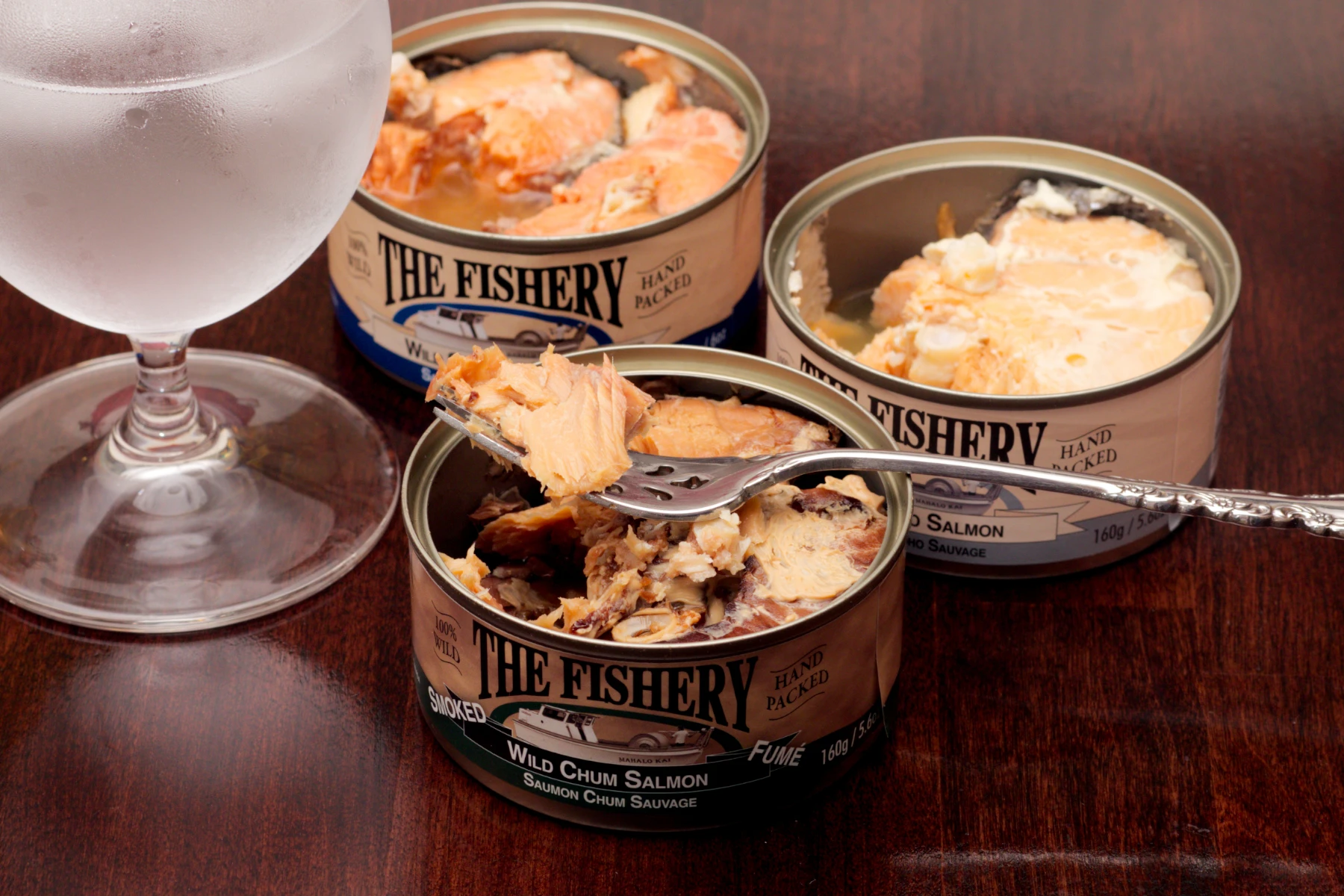 The friendliest salmon of all, as they’re all chums.
The friendliest salmon of all, as they’re all chums.As fifty percent of the namesake of this blog, I couldn’t refuse the allure of the chum salmon. It’s one of the most populous species of Pacific salmon and is unfortunately the lowest value commercially because of their abundance. They are often preserved via canning or drying.
Opening this can transported me to a beach bonfire by the Pacific, as smoky flavours filled the room almost the instant the top was popped. Further olfactory inspection revealed notes of dark chocolate and espresso. Scents of driftwood, kelp, and fish were also present.
The flesh is visibly darker and drier, an effect of the smoking process. The fillet was drier, flakier, and saltier versus the other two products. The smoking process drew out excess moisture from the fillet and concentrated the natural flavours as well as imparting smoky aromas. My fork met more resistance in this fillet than the other two, but the morsels stayed more easily intact once on the fork.
The flavours matched the initial impression, with a briny, fishy, smoky profile. There was a gentle bitterness that creeped in that added to the espresso-like experience. Overall, this was not a neutral product, making it a bit more fun than the other two. However, the other two products were much more versatile as the smoky flavours can easily overpower the experience.
The skin was drier and chewier, but still fun to eat. There was less skin in this can versus the other two, possibly due to shrinkage during the smoking process, or just luck of the draw. There was a big piece of spinal bone in this can, which I gobbled up happily.
The entire time tasting this product all I could think of was salmon candy, since it shared so many of the same flavours as the delicious fishy snack. I grabbed some maple syrup from the pantry, slathered some on the fillet and was surprised to find an almost exact recreation of the salmon candy experience, minus the texture. This was a nice little bonus to a pretty impressive line of products.
The Podium
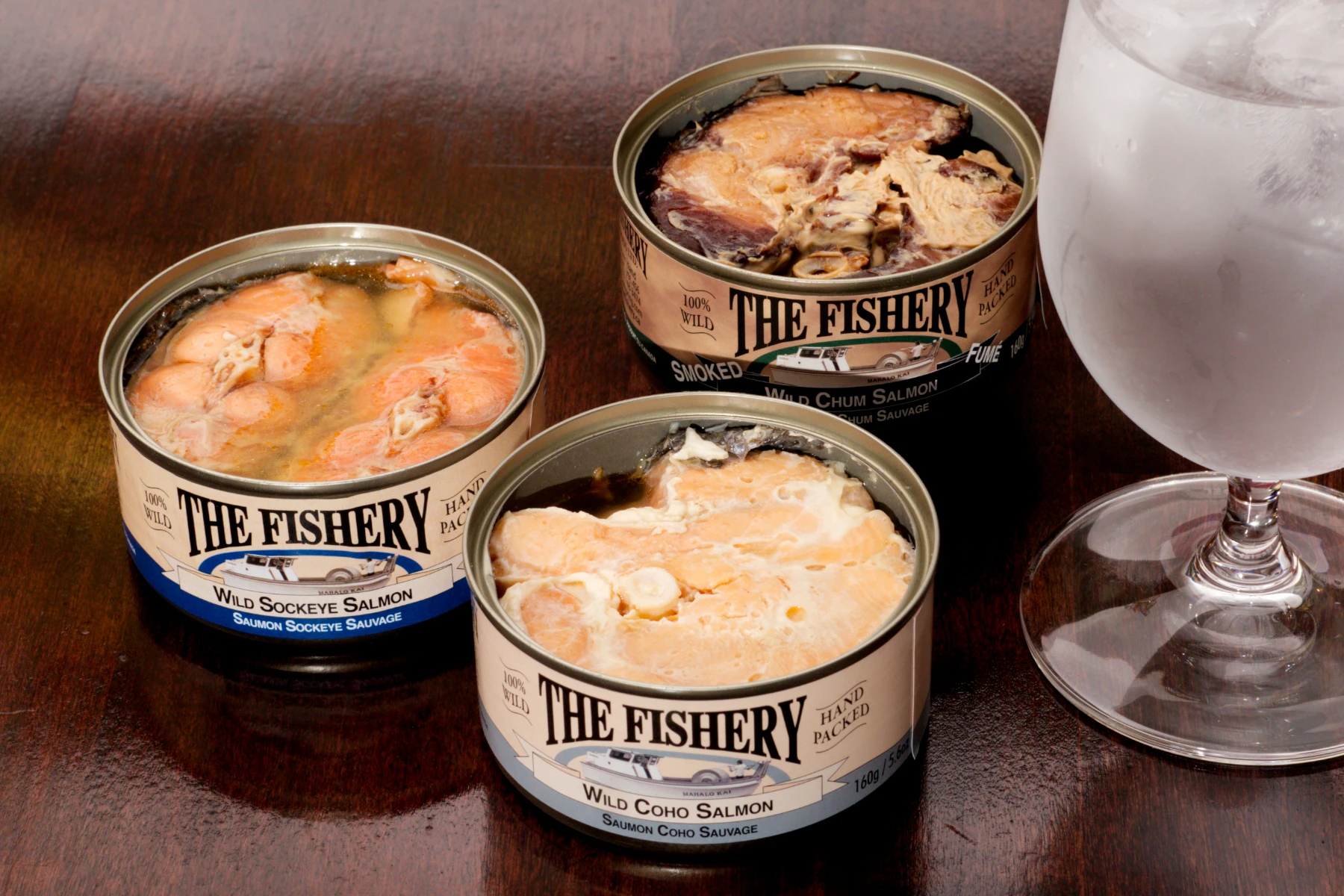 Props to The Fishery for some strong showings.
Props to The Fishery for some strong showings.Overall, the gold medal experience was the coho salmon, with its rich, creamy texture and bolder salmon flavours, it was the best balance between texture and flavour.
The silver medal goes to the sockeye, which in comparison had the better texture but was a bit more subtle in the flavour department. The texture preservation in itself was a work of magic, and the colouration was most appetizing.
The bronze medal goes to the chum, fitting perfectly with the colour of the fillets. This third-place medal is not a last place medal, since in a different competition, the chum salmon can easily come out on top. Although the texture of the product was a bit lacking, the flavours were all there. Unfortunately the flavours were a bit overpowering by the end of the tasting and my tastebuds were a bit fatigued near the end of the can.
Overall, theses are all excellent products, and none of them chums (even the chum).
In terms of ratings, The chum at $6.00 offers the best value, while the coho and sockeye at $7.00 dollars deserve an honourable mention for being quite affordable. This is not your everyday, off-the-shelf salmon can and I think they’re all worth a try.
Support independent businesses by seeking these and other similar products out, and visit the Gulf of Georgia Cannery Historic Site if you’re in the neighbourhood and want to learn about the history of canning in the Pacific Northwest.
The Sockeye
The Coho
The Chum